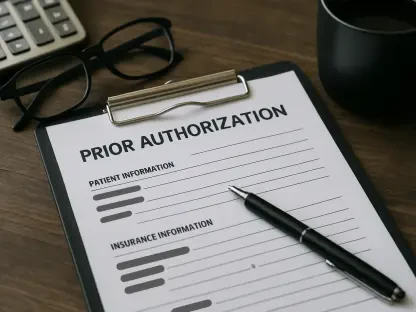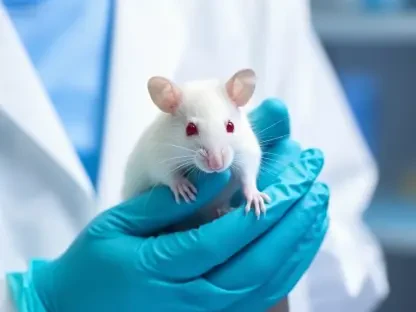In today’s ever-evolving world of medicine and technology, James Maitland stands at the forefront, revolutionizing healthcare by integrating robotics and IoT applications. Holding an impressive track record and driven by innovation, Maitland’s insights into using technology are invaluable, especially when considering the complex landscape of healthcare and safety regulations.
How has the Trump administration’s anti-regulatory approach impacted the food safety system?
The Trump administration’s preference for fewer regulations may seem like an attempt to streamline bureaucracy, but it has significant implications for food safety. By minimizing oversight, the balance between operational efficiency and safety has shifted, potentially compromising the safeguards that prevent foodborne illnesses. This approach could lead to a higher risk of outbreaks, with more companies and growers operating without stringent consequences.
What are the specific risks that the system faces due to cost-cutting measures at the FDA?
Cost-cutting at institutions like the FDA leads to a weakened ability to monitor and enforce food safety regulations. Reduced funds can mean fewer inspections and delayed responses to outbreaks, increasing the public’s vulnerability to contaminated food. By prioritizing budget cuts over safety, the system’s integrity can be eroded, risking public health on a broader scale.
Can you elaborate on how an E. coli outbreak can signal future risks in food safety?
E. coli outbreaks are telltale signs of underlying issues within the food safety network. They demonstrate how easily pathogens can infiltrate the food supply when oversight is lacking. Each outbreak serves as a reminder of the growing problems we face without stringent regulation and consequence enforcement. Without addressing these signals, we’re risking wider and more severe public health crises.
How might less regulatory oversight and fewer consequences affect food safety?
Lax oversight and reduced penalties can lead to complacency among food producers and processors. When companies don’t face repercussions, there’s little motivation to adhere to high safety standards. This attitude can result in increased contamination cases, as foodborne pathogens like E. coli and salmonella become more prevalent, posing severe health risks to consumers.
Why was the proposed regulation to reduce salmonella in raw poultry withdrawn, and what consequences could this have?
The administration’s withdrawal of regulations aimed at reducing salmonella could have dire consequences. These regulations are vital for preventing thousands of illnesses annually. Removing them signals a willingness to accept higher levels of contamination in our food supply, potentially leading to more frequent outbreaks and ultimately affecting public health safety.
What is the significance of disbanding the Department of Justice unit that pursues actions against companies with contaminated food?
Disbanding this unit dilutes the enforcement of food safety laws. Such actions undermine accountability, as fewer legal repercussions may embolden companies to ignore safety protocols. The absence of this critical oversight function could result in an environment where food safety violations go unpunished, increasing the risk of contaminated food reaching consumers.
Can you explain how staffing cuts have affected the FDA’s ability to respond to outbreaks?
Staffing cuts at the FDA significantly impact the department’s ability to promptly address food outbreaks. With fewer personnel, there are delays in identifying and responding to contamination events, which can exacerbate the spread and severity of outbreaks. This results in prolonged exposure to dangers that could have been contained with a fully staffed team.
What were the challenges faced in getting approval for alerts under the Trump administration?
The process of issuing alerts became bogged down with bureaucratic hurdles, delaying crucial information from reaching the public. These new requirements slowed down the FDA’s ability to notify consumers about potential hazards, reducing the efficacy of food safety alerts meant to protect public health.
Why is it important to identify the grower or processor in foodborne illness investigations?
Identifying the source of an outbreak is crucial for preventing future incidents. Disclosing the grower or processor responsible pressures them to improve safety protocols, pushes for sanitation enhancements, and allows regulators to monitor repeat offenders closely. Transparency in these investigations helps safeguard the public by fostering accountability.
How can the lack of detailed public information impact future food safety measures?
A dearth of detailed public information hampers consumer awareness and informed decision-making. It limits the ability of regulators and the public to hold companies accountable and weakens community efforts to advocate for improved food safety standards. In the long run, this lack of transparency can stall progress in critical policy and operational reforms.
What steps could be taken to improve sanitation among growers and identify repeat offenders?
Addressing sanitation issues requires a multifaceted approach. This includes increasing transparency through detailed reporting, enhancing regulatory oversight, and implementing stricter penalties for safety violations. Regular inspections and audits can also play a vital role in maintaining high standards, helping to catch non-compliance early.
What are your thoughts on prioritizing removing food dyes over addressing more serious food safety issues like E. coli?
Focusing on removing food dyes is valuable, but it should not overshadow more pressing concerns like E. coli, which poses immediate health risks. Prioritizing serious pathogens ensures that food safety measures tackle the most dangerous threats first, safeguarding public health effectively before addressing secondary concerns.
How do food safety concerns directly affect individuals and families involved in outbreaks?
When outbreaks occur, the effects ripple through communities, affecting the health and financial well-being of affected families. Illnesses can lead to hospitalization and, in severe cases, fatalities. Beyond the physical toll, the emotional and financial strain on families can be immense, highlighting the critical need for strong food safety measures.
Do you have any advice for our readers?
Stay informed and vigilant about food safety. Advocate for transparency and accountability in food safety practices. By demanding stringent regulations and supporting organizations working towards better oversight, readers can contribute to a safer food system for everyone.









